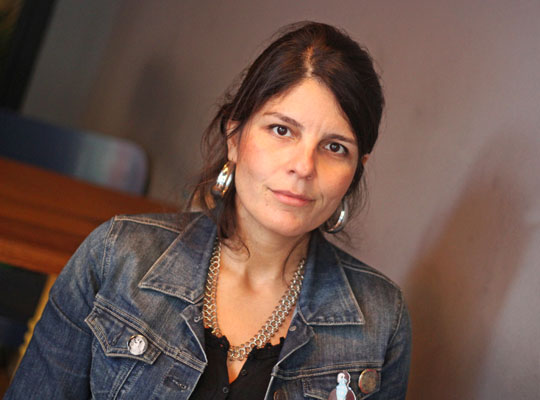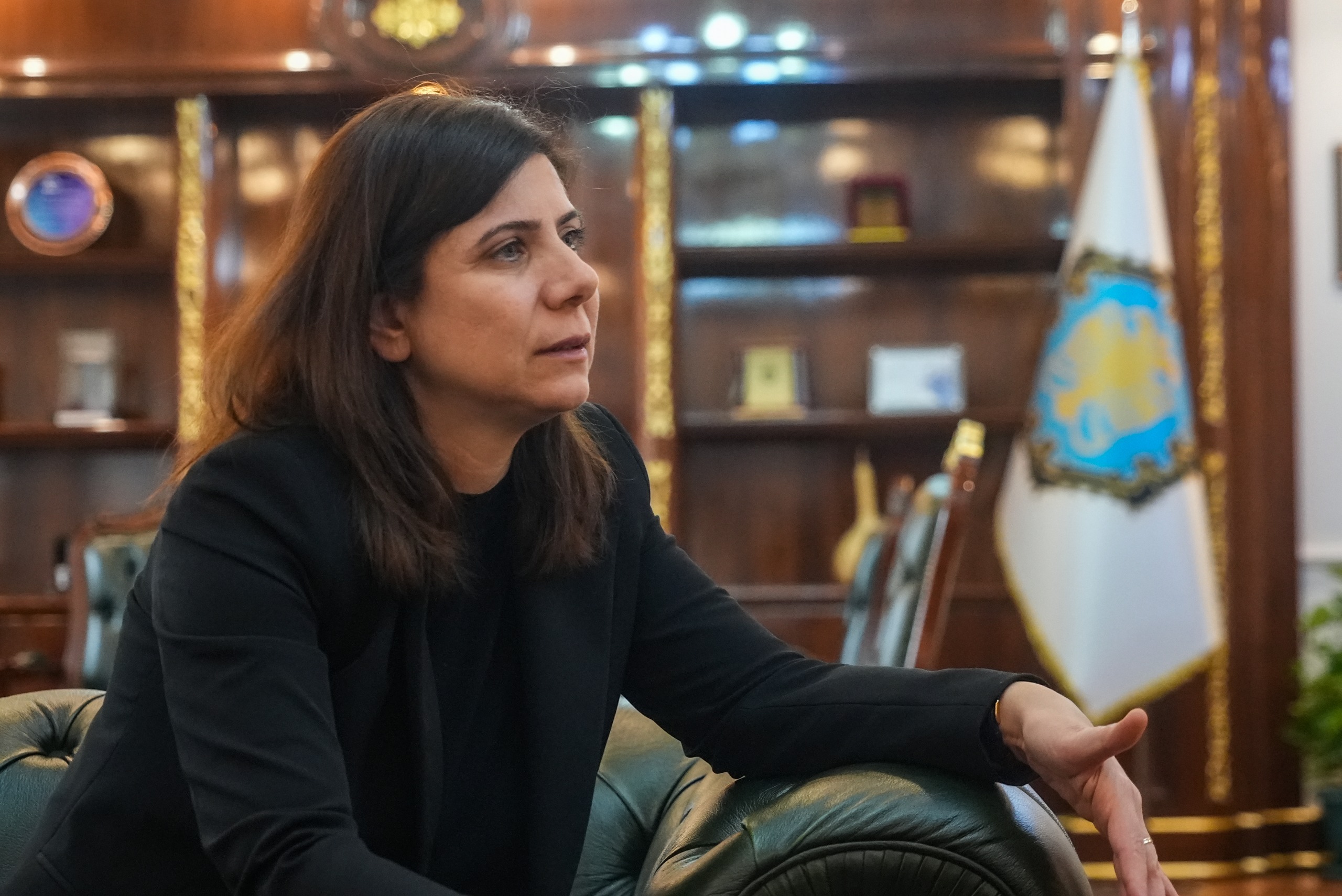The third guest of The History Foundation’s Thursday Talks series titled ‘Deportation-Massacre-Genocide 1915-2015’ was Assistant Professor Nazan Maksudyan, Head of the Department of Social Sciences at Istanbul Kemerburgaz University. Maksudyan held a speech titled ‘Three Generations, Three Massacres: Armenian Children and Orphans from 1895 to 1915’ and we had the chance to talk to her about the perception of children during the Ottoman period, and the conditions and political roles of Armenian orphans.
EMRE CAN DAĞLIOĞLU
misakmanusyan@gmail.com
In your speech, you focused on three generations of Armenian orphans that resulted from three massacres, those of 1894-6, 1909 and 1915. Did you manage to access statistical data on these orphans?
It is very difficult to provide statistics regarding this matter. 50 thousand orphans are mentioned for the 1894-96 Massacres. We know that the number of the dead stands at 200-300 thousand. Therefore, the figure 50 thousand is too high according to some, and too low for others. We know that 20-30 thousand people were murdered during the 1909 Adana Massacre, and the number of children in orphanages was at 3,500. However, there were of course children that never made it to orphanages. In 1915, the matter becomes even more complicated. It is said that 500-600 thousand children maanged to survive. Even if I were to define children as those aged 17 and lower, in the context of the massacres, the children in orphanages during that period are often those under the age of 13. Because male children over the age of 13 were perceived as a threat and often murdered as well. Girls over the age of 13 were abducted, captured, or forced into marriage.
How does the perpetrator’s perception of children change in the massacres? Under what circumstances are children perceived as a threat? Under what circumstances are they protected?
This is another issue that cannot be understood when approached from a nationalist perspective. A more hard-line racist approach takes into account the ‘potential of the child to return’ and thinks that children must be murdered as well. There are examples of this kind in history. However, children deemed beautiful were immediately taken in by households, or those deemed intelligent were adopted. Therefore, there is a perception that these children could be used for other means. The missionaries, on the other hand, come up with this viewpoint: “The Muslims took the intelligent Armenians because they weren’t bright themselves.” That, of course, is the product of another racist approach… Yet there is also the fact that, while slightly elder children who could use weapons were perceived as a threat, whereas younger children were not. Güven Gürkan Öztan also pointed this out at my speech at The History Foundation, the situation changed in the 1920s. In 1927, there was a debate where the view was expressed, “Street urchins cannot be of our kind; they must be of Armenian stock”. A new differentiation has emerged; a national identity is imposed on children. During the time of the Empire, there was the view that children could be transformed into anything if they were beautiful and intelligent, that is why everyone wanted to claim orphans as their own. The Americans, the Patriarchate and the State wanted to “save” these children.
What, in your opinion, was the reason for that?
This particular point is a complete mystery for me. I said it during my speech as well. Most of these children were ill and exhausted. And those who wanted to save them were also impoverished and tired. Today, in Istanbul, no one tries to claim the thousands of Syrian children under similar conditions with a similar motivation. I really cannot make out why. Although I find absurd the thesis of the Americans based on Armenians being beautiful and intelligent, I do think that such a perception may have existed during that period.
Harput, 1910. Note on the back of the photograph, written most probably by the missionary Maria Jacobsen: ‘8 poor children I brought from Arapgir. Little Vartuhi is missing fingers and toes, three of them are blind, the others disabled.’ © KMA Archives, Denmark |
|---|
As the 1894-96 Massacres and the 1909 Adana Massacre took place, a modernization campaign was continuing throughout the Ottoman Empire. What was the role deemed appropriate for these children within this modernization campaign?
In fact, the role ascribed to children within such a perception, also explains why orphans were important politically. Groups such as women, children or the sick, which the State did not take seriously before centralization, had to be taken under control after modernization. The modern state is administered with concerns over population. This process, during which the State consolidated its power, accelerated during the reign of Abdul Hamid II, and continued at a similar pace. Therefore, the State began to take children into consideration as its subjects. This is also why an institution like Darülaceze was founded in 1897, and gathered abandoned children off the streets. Communities, in turn, perceived this as an intervention into their domain of influence. On the other hand, characteristics that more strongly refer to identity, which we could describe as nationalism, began to constitute problems. In this sense, the activities of the State concerning orphaned children were not ascribed a positive meaning. This meaning varies according to how one perceives the movement of Ottomanism that came to the fore during the time of the Young Turks. In other words, is Ottomanism about everyone putting away their differences and speaking Turkish, or is it about everyone retaining their differences? According to Cemal Pasha, everyone had to learn Turkish, and so Turkish was made mandatory at the orphanage. On the other hand, this lead to the loss of the community identity. This, to a certain extent, is the departure point of the dispute over the struggle to claim orphans.
What are the similarities between these three generations of orphans?
As I mentioned before, the fact that all the actors involved struggled to claim them as their own became the common fate of these three generations. In 1894-96, the Abdul Hamid II regime clutched onto them on the one side, while the missionaries tried to clinch them on the other. In 1909, this time it was the Young Turks Regime that tried to claim the children. Cemal Pasha, Governor of Adana at the time, tried to assume the care of the children, whereas Zabel Yesayan, on behalf of the Patriarchate, had to fight him for them. Whereas in 1915, almost all state officials adopted a child each; and in 1919, the Patriarchate tried to reclaim these children. Another similarity exists in the efforts to severe their ties with their roots. In a world where identity was determined via language and religion, they faced the threat of losing both. Almost 85% of orphans in the Abdul Hamid II period were taken into the care of American missionaries, and around 80% of them became Protestant. None of the children who were taken into orphanages after the Adana Massacre learned Armenian, and it is doubtful whether they received religious education. After 1915, a great number of children to which it is impossible to put a figure to, were adopted and Islamicized. And also, from what we know from the memoirs of orphans of these massacres, they displayed a will we would not expect from a child with our contemporary perception. Even when they were adopted, they escaped the moment they saw an opportunity. Today we see children that cannot take the ferry alone, but in those days, we read of children who went from Adana to Sivas alone to find their families.
Did the orphanages implement a mission to re-establish the ties of these children with their roots, to combat the policy of severing their ties with their roots?
In the debate over state policies, it is said that, especially in the 20th century, that orphanages were the entirely wrong method. The method used in orphanages is described as very unhealthy, and adoption is perceived as the correct method. Nevertheless, institutional solutions are perceived as more progressive. The impact of orphanages on identity is also a matter of debate. American orphanages, within a policy of strict indoctrination, successfully carry out their duty of raising the children as Protestants. That is why complaints poured in to the Patriarchate throughout the 1890s; stating that missionaries were not bringing the children to Church, or made fun of children that crossed themselves. The Ayn Tura Orphanage, founded in the aftermath of 1915 by Cemal Pasha and Halide Edip, although it did not have the same resources as the Americans, tried to do a similar thing and Turkify the children.
In the context of ethnic engineering, was leaving orphans seen as an active method to be implemented?
In the context of the idea of the nation-state and the Fourteen Points of Wilson, we are talking about a period when forming a majority was important, and population represented a real source of wealth. The potential to transform children acquires significance in this context. Therefore, to reduce the number of Armenians and increase the number of Muslims, is an idea that may seem reasonable. Not killing the children does not mean letting them remain Armenians. However, we do not know how much of this was calculated; because the orders issued do not include any provision to not kill children. The orders include directives such as, place them in orphanages, or distribute them to households, but there is no clear order that states that they are not to be killed.
Headmistress Halide Edip and the teaching staff are in the centre, surrounded by boy and girl orphans (1918) © AGBU Ayn Tura Orphanage |
|---|
“It wasn’t that easy to adopt a child and then claim the property of the child’s family”
There is also a narrative of heroism based on saving orphans during the Genocide. However, seizing the inheritance of the family by adopting these orphans was a method used especially in 1915. To what extent is this narrative of heroism related to the practice of adopting children for economic reasons?
In fact, adoption was quite a widespread practice during that period, because these children served a purpose in labour oriented work. Adopting children for economic reasons is of course one thread of thought in explaining the process. However, we are talking about properties often seized by the State itself. Therefore, it wasn’t that easy to adopt the child and seize these properties. I saw such an example in Mardin. The neighbour adopted the child, and seized the house that belonged to the child’s family. However, I don’t know how valid such an explanation would be in the more general sense. There are many examples in which people adopted orphaned children for purely humane reasons.







